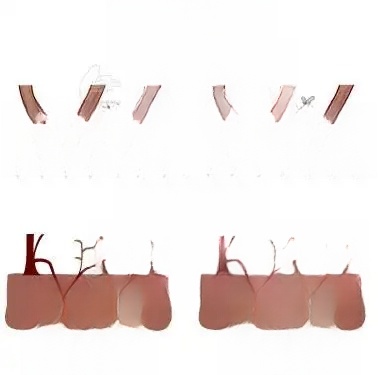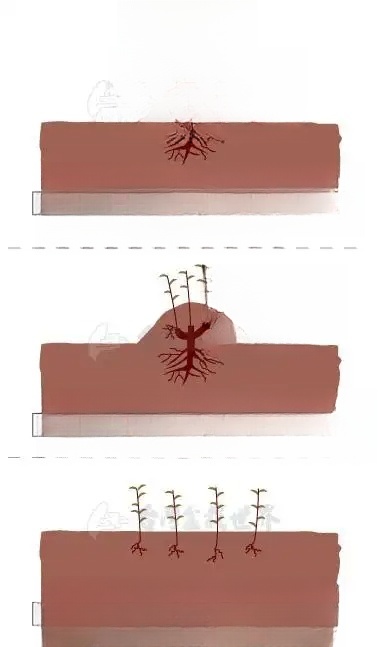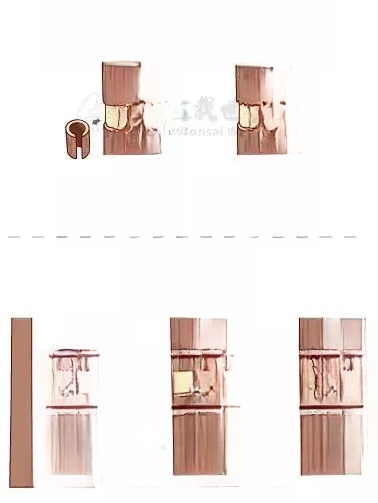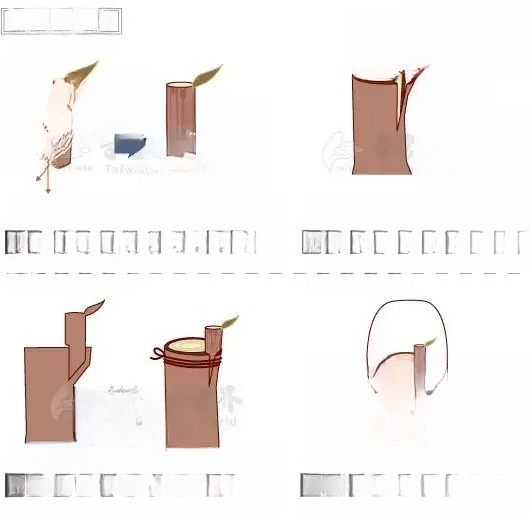How to expose the roots of bonsai
2. The method of piling up soil to expose the roots: For the species of Tamarix that easily sprout adventitious roots at the trunk base, you can make a slight incision on the trunk in the spring and pile up moist bacon and soil. After the new roots age in 2-3 years, remove the soil and expose the roots. Then, you can artistically trim the exposed roots according to your wishes.
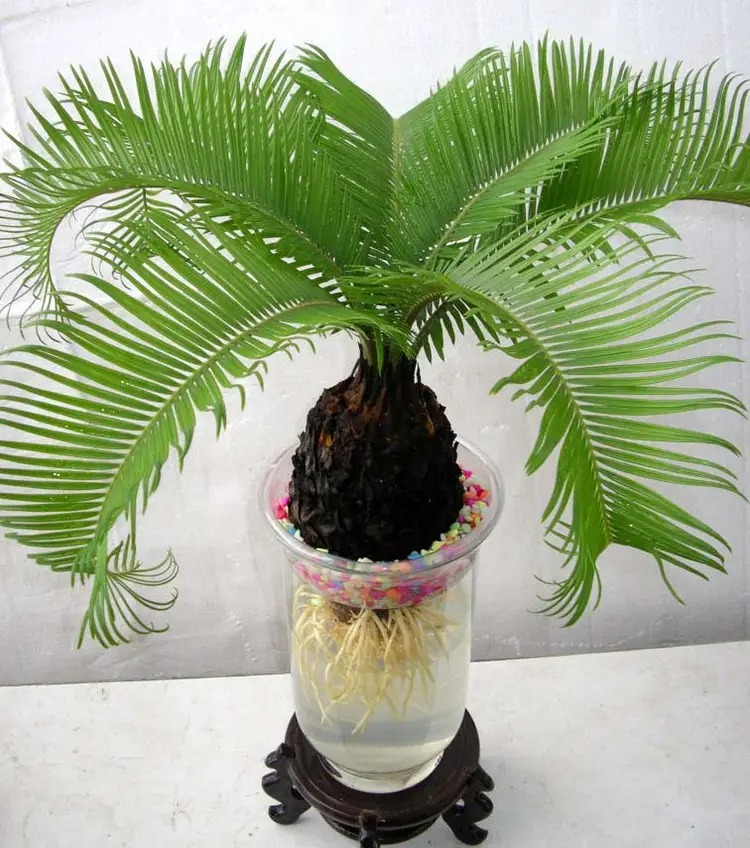
3. Sleeve root exposure method: For some tree species that are difficult to sprout adventitious roots, such as pomegranate, after the crown is pruned into shape, the bark can be peeled in a ring shape for one week on the trunk at a higher position from the pot surface, and then peeled in a ring shape for one week. Use a section of Coke plastic bottle, break the sleeve, fill it with bacon soil, and water it occasionally to retain moisture. After 2-3 years, remove the tube to expose the roots, and thin out the roots to shape them. The roots should emerge from the top and drill down from the tail, and the fine roots should fly sideways, each hugging the terrain, like dragon claws.
4. Ringing and exposing roots: For tree species with soft roots and branches that can be ringed, such as ginkgo, osmanthus, and daphne, the extended branch roots can be ringed and exposed, and then the root tails can be buried in the soil to consolidate the foundation. The extended trunk and backbone branches can also be ringed and connected to shape, so that the branch ring and the root ring echo each other up and down, which is very interesting.
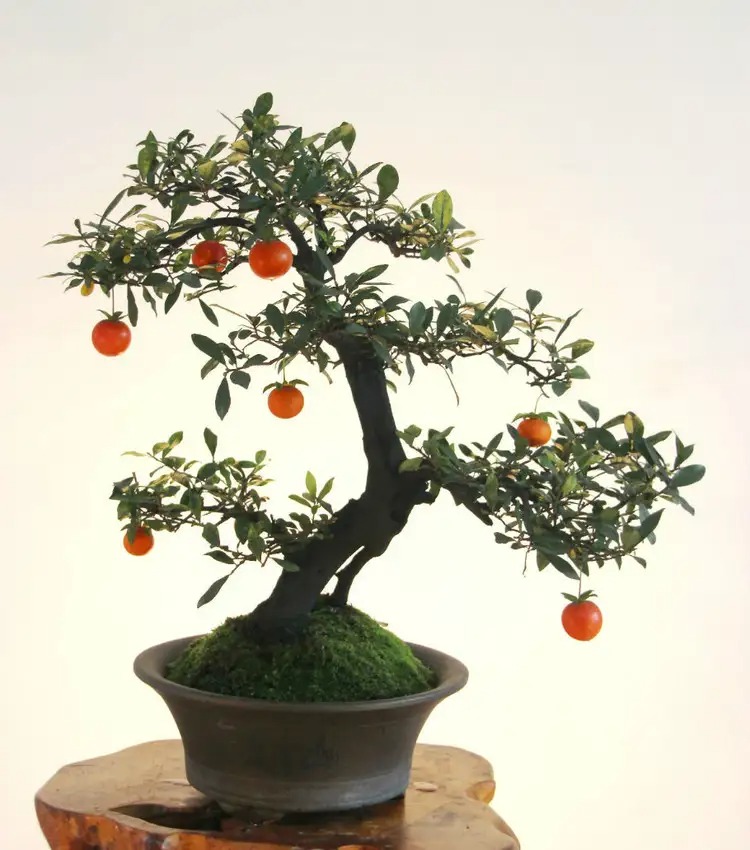
5. Crab claw exposed root method: Make a circle around the base of the formed tree stump, pile up soil and cover the trunk, so that adventitious roots will sprout in a circle. After the new roots become woody, select ten of them as the shape of crab claws, that is, two large ones as crab claws and eight small ones as crab legs. Raise them in the shape of crab legs and then bury them. This not only renews the root system, but also increases the artistry of the exposed roots of the bonsai.
6. Rock-embracing and exposed-root method: If you want to cultivate rock-attached bonsai, you can choose tree species with unclear main roots but long and numerous side roots as stakes, such as winter jasmine and osmanthus, cut off their main roots, surround the side roots on an oblong natural ornamental stone, and then bury the root tail in the pot soil, like a golden rooster holding eggs.
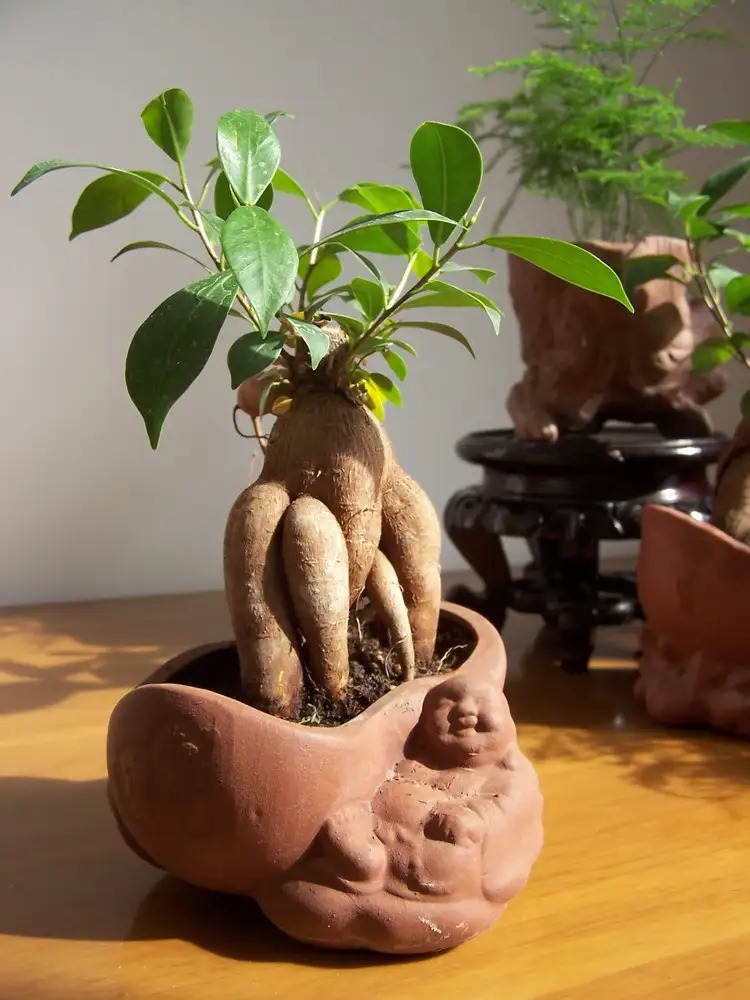
7. The method of piercing the stone and exposing the roots: First, use a natural ornamental stone with an artificially drilled hole as an attachment stone for the tree stump. Then choose a stump material with extended tree roots. Insert the root head through the hole in the stone. The root head will be entangled on the stone in a way that it is sometimes exposed and sometimes hidden. Finally, it will drill into the potting soil and develop into a root system.
8. High-grafting exposed root method: If you want to cultivate an exposed root bonsai with a coiled dragon wrapped around a column, you can choose the long dragon-shaped root system of the same tree species as the grafted root, graft it to the upper end of the trunk, and twist the grafted root around the trunk, and then put a long soil-building tube on the trunk to keep the grafted root moist, and the root tail is planted in the potting soil. After the grafted root heals, remove the sleeve and soil, revealing the posture of a coiled dragon wrapped around a column.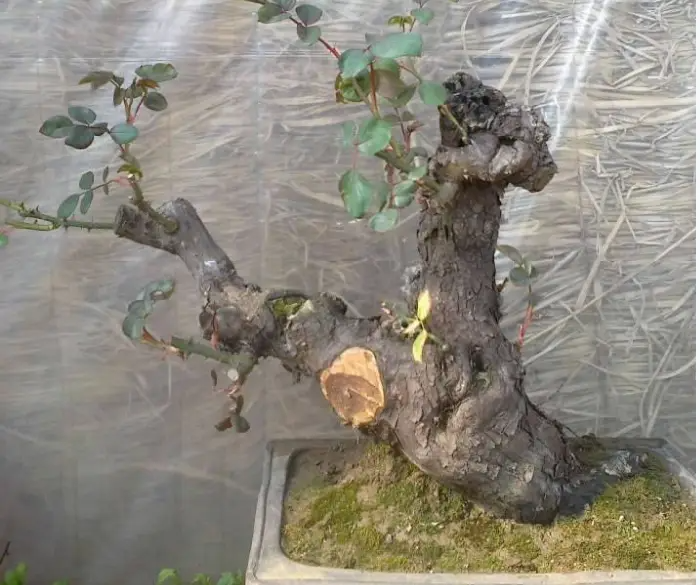
9. Root art with exposed roots: This is a form of tree stump bonsai that combines natural root art with bonsai. Choose underground tuberous roots such as ginseng or Polygonum multiflorum in the shape of a human figure, as well as other pictographic root materials as stump materials, expose them on the surface of the pot, and plant the lower main roots and fibrous roots in the potting soil. After they survive, new roots sprout from the pictographic root heads to form the crown of the plant. Among them, the vine-like Polygonum multiflorum can be shaped like a stand.
10. The hanging root and exposed root method: Choose a banyan tree that can sprout aerial roots as the material for bonsai, and plant it in a rectangular pot. After the crown is formed, use a rectangular glass cover to cover the pot and increase the humidity inside the cover. This will encourage the lateral trunks of the bonsai to sprout hanging aerial roots, which will form new root systems after entering the soil. At this time, the aerial roots will become new tree trunks, and after a few years, you can cultivate a jungle bonsai with multiple trunks and a common crown.
Cultivation techniques of potted flowers and bonsai
1. The relationship between potted flowers and the environment
The living environment of plants is soil, water, light and temperature. Potted flowers are no exception.
(1) Soil: Soil is the indispensable basis for the survival of every plant, especially most potted flowers, which require soil rich in various minerals.
Generally speaking, there are three types of soil: acidic soil (PH value less than 7), neutral soil (PH value equal to 7), and alkaline soil (PH value greater than 7). Most flowers in the south prefer acidic soil and neutral soil, and there are fewer flowers that prefer alkaline soil. The soil PH value of potted flowers in the south is generally between 5.5 and 6.5, which is more suitable for the growth of flowers.
Here are some soils for growing potted flowers.
The cultivation soil for potted flowers requires looseness, air permeability, water retention, fertilizer retention, and no water accumulation. Natural potting soils include: mountain sandy red soil developed from sandstone, pond mud humus soil, peat soil (i.e. grass coal soil), etc. The other two need to be artificially synthesized (i.e. mixed in proportion), such as: humus soil and sandy red soil mixed evenly in a ratio of 2:1 for cultivation of spring taro, Monstera, Green Radish, Hulk, Schefflera, Colorful Cordyceps, Syngonium (red, emerald), etc., which is called bisexual soil. Another example: artificial fungus waste (must be corn stalk crushed material or rice bran, bean bran material) pond mud or mountain sand red, river sand or perlite, mixed evenly in a ratio of 3:2:1 for cultivation of Brazilian iron (Dracaena fragrans), various orchids, velvet, arrowroot, etc. It contains various inorganic salts such as nitrogen (N), phosphorus (P), potassium (K), sodium (Na), calcium (Ca), fungicides, plant fibers and other nutrients needed by various flowers. It does not require topdressing or changing the soil for a long time after a one-time cultivation. It is an ideal soil for indoor flower cultivation.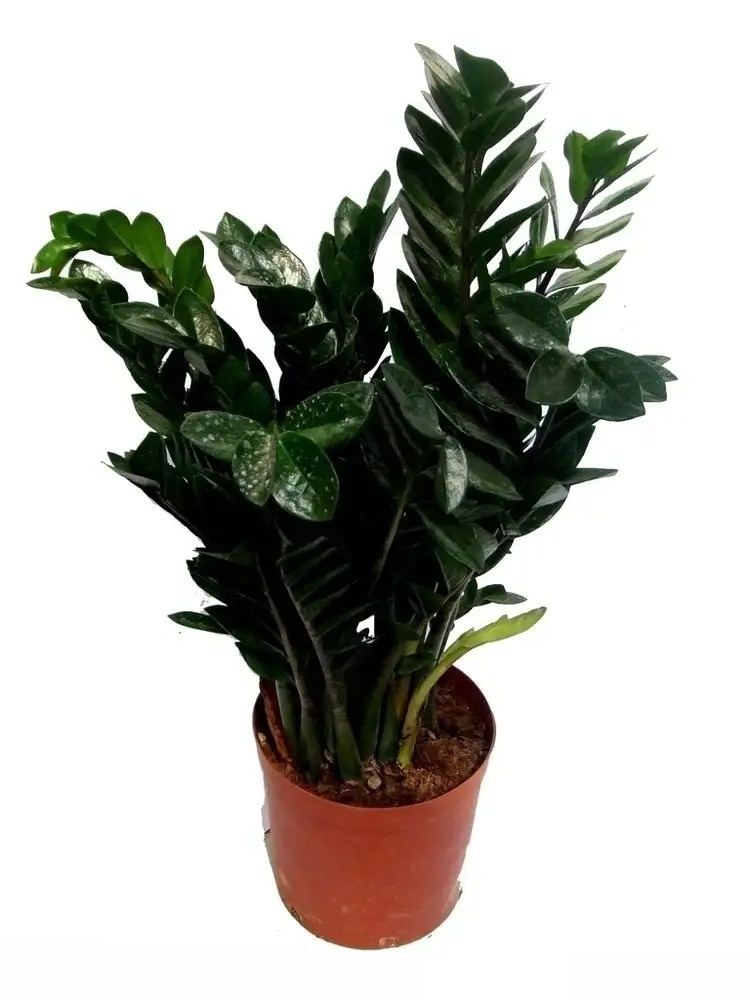
(2) Temperature and light: The distribution of various plants varies with altitude, forming the suitable habitat (community environment) for each plant. Different community environments require different temperatures, humidity, and hours of light. False betel nut, zebra, velvet, and money tree, which are introduced from tropical to subtropical areas, are suitable for indoor and outdoor cultivation in tropical areas. When moved to subtropical areas, they are easily burned in summer due to strong ultraviolet radiation and easily frozen in winter. They cannot survive the winter in the wild and must be moved into greenhouses or indoors.
(3) Water: Water is the lifeblood of plants, and each plant has different water requirements. For example, the three major families of plants, Orchidaceae, Theaceae, and Poaceae, have similar water requirements for some plants in each family, but they are different from each other in terms of the major families. Orchidaceae plants are negative-female flowers, and Theaceae plants are semi-negative-female. The flowers of these two families require less water than the Poaceae. The vast majority of Poaceae flowers are positive-female flowers, and different varieties of flowers in the family have different water requirements.
In the central Yunnan region, the water supply of flowers varies with the seasons: from late spring to early summer to late autumn and early winter, the temperature is high, the rainfall is abundant, the plants grow vigorously, and the water demand increases greatly. Watering should be done in the morning and evening to avoid burns. Indoor flowers need to be watered thoroughly only once every 10 days or so because the air humidity is high during this period and the transpiration of the indoor leaves is small. From the arrival of the first frost to the arrival of the following spring (i.e., late spring cold), the air is dry, the temperature is low, and the water temperature is relatively low. Watering should be done on sunny afternoons as much as possible. Be especially careful when watering indoor foliage plants. The water temperature for indoor flowers must be between 25℃-38℃ before it can be used.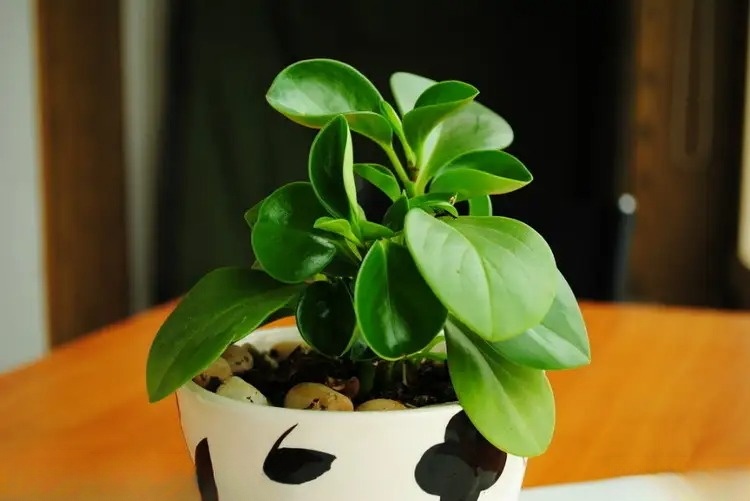
2. Flower reproduction
There are two types of reproduction: sexual reproduction and asexual reproduction.
(1) Sexual reproduction: seeds are obtained through sexual (fertilization) processes and used to reproduce new individuals. To obtain high-quality seeds, you must have excellent parent plants and store the seeds collected from the excellent plants properly. Some seeds must be sown immediately after being collected. For example: star anise, yellow orchid, tree fern cedar, ailanthus, etc. The stored seeds must be placed in a cool, ventilated, and dry room. The seeds of pine, fir, cypress, and grass plants can be stored for a maximum of one year. The bulbs of bulbous flowers, such as freesia, white lily, tuberose (herb), and gladiolus, can be stored for a maximum of six months.
(2) Asexual reproduction: using the plant's vegetative organs for reproduction, methods include: cutting, root division, layering, grafting, tissue culture, etc., to make it a new plant. Bougainvillea (bougainvillea), various papaya crabapples, cherries, five-color plums (3 species), oleander, Chinese rose, rose, juniper, boxwood, rose, gardenia, bamboo, crape myrtle, etc. Asexual reproduction of flower varieties will affect the survival rate due to seasonal changes. Bamboo, this newspaper's special correspondent branch, bougainvillea, oleander, winter jasmine, purple teng, crape myrtle, etc. have a higher survival rate in spring. From autumn to before the end of autumn, the survival rate of Rosaceae and Salicaceae is higher. The survival rate of bougainvillea is very low after autumn. In order to improve the survival rate, the following hormones can be used, namely: floridulin, gibberellin, cytokinin, abscisic acid, α-naphthacetic acid, indolebutyric acid, ethylene and growth retardants, etc.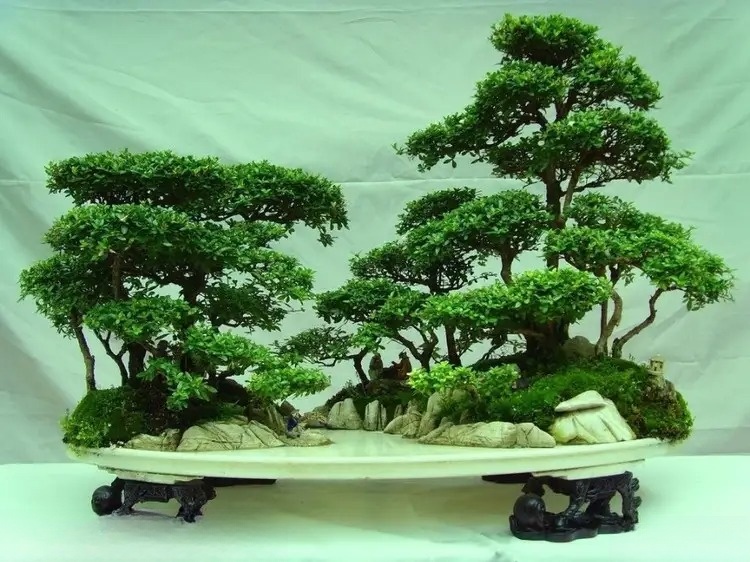
3. Classification of potted flowers
At present, potted flowers in Yiling are roughly divided into three types according to biological characteristics and the requirements of commercial production: positive flowers, negative flowers and neutral flowers.
(1) Positive flowers: Generally, they can grow healthily under strong light, such as: more than 10 species of bougainvillea (also known as bougainvillea), white osmanthus (Osmanthus fragrans), osmanthus fragrans (3 species), euphorbia pulcherrima (2 species), crab orchid, cactus (3 species), cactus, Milan, banana Michelia, Araucaria, boxwood (4 species), rose (more than 10 species), rose (4 species), five-needle pine, cypress, autumn chrysanthemum (105 species), purple teng (2 species), cherry blossom (3 species), winter cherry (small Yangchun), osmanthus fragrans, Euphorbia pilosa, Osmanthus fragrans, magnolia (3 species), German orchid (2 species), Nandina domestica, forsythia, There are many species of daisy, lily, cypress (6 species), gardenia (2 species), aster (5 species), osmanthus, daisy, Chinese dianthus, carnation (7 species), bamboo (5 species), cosmos, rudbeckia, marigold (3 species), calendula, canna, American dianthus (5 colors), golden lily, hibiscus (3 species), freesia, oxalis (2 species), bubblewort, woody baby's breath, yucca, mountain magnolia, magnolia, loquat, rose (5 species), red-flowered magnolia, plum, potted orange, cypress, red coral, sweet crabapple, peach, military rations, hypericum, pomegranate (5) species, etc.
(2) Negative flowers: Generally, they can grow and develop normally under weak light conditions with a shade degree of more than 50%, such as: spring taro, monstera, false betel nut (only in Yiling), Dracaena fragrans (only in Yiling), Syngonium (red and emerald), green ivy, green velvet, dragon mountain dragon, lucky bamboo, bee green, strelitzia, cyclamen (many varieties), saxifrage, hanging bamboo plum, primrose, cineraria, horse chestnut (only in Yiling), money tree, bamboo palm (3 varieties), Schefflera arborvitae, Belgian azalea, calla lily, ferns (many varieties), begonia, dry autumn, camellia, begonia, thorn palm (needle palm), fan palm, calla lily, etc.
(3) Neutral flowers have little to do with the intensity of light, such as: Camellia sasanqua (2 species), Serissa serrulata, Sedum scabra, Coral revoluta, Violet, Azalea (except Belgian Azalea), Cycas revoluta (5 species), Anemone odora, Asparagus cochinchinensis, Glechoma longituba, Butterfly vine, Ivy (3 species), Podocarpus, etc. Neutral flowers are between positive flowers and negative flowers. They are relative, but not unrelated to light.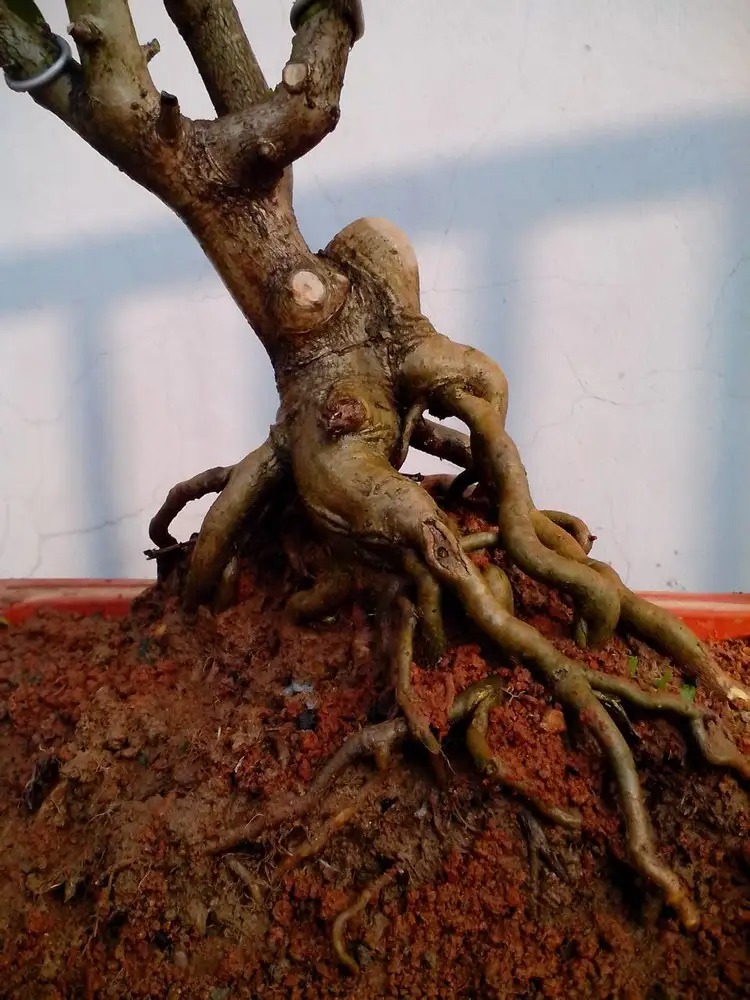
4. Shaping of potted flowers
Potted flowers can be divided into herbaceous and woody. The shaping of herbaceous flowers can often be done by pinching and pruning 2-3 times. Woody flowers need to be pinched many times. The shaping can be completed through eight steps: leaf picking, flower picking, fruit picking, bud peeling, bud peeling, support binding, and shaping. Potted woody flowers include flower viewing bonsai, fruit viewing bonsai, landscape bonsai, rock bonsai, and stake viewing bonsai. Among them, flower viewing and fruit viewing bonsai does not require a long time, generally one to three years can be completed, landscape, rock, and stake viewing bonsai require more than three years to complete, and some require decades to complete the entire shaping process.
5. Cultivation and management of potted flowers
Potted flowers are divided into four types: open-field flowers, greenhouse flowers, promoted and inhibited cultivation, and soilless cultivation. The first two are commonly used.
(1) Management of open-field flower cultivation: including land preparation, breeding, thinning, transplanting, irrigation, fertilization, tillage and weeding, shaping and pruning, wintering protection, and crop rotation.
Annual flowers: Most of them are tropical flowers or herbaceous flowers. Tropical flowers are not cold-resistant and will die when frozen. Biennial flowers are more cold-resistant than annual flowers and are best sown in spring. Annual and biennial flowers degenerate quickly. To prevent the organization and biology of the varieties, cover them with pine needles or disinfected grass after sowing and water them in time. Transplant when the seedlings grow to 10 cm, strengthen water and fertilizer management, and pinch the tops, leaves, and flowers in time for shaping.
Perennial flowers grow deep into the soil, grow robustly, have strong adaptability, and are able to resist adverse natural environments. Once planted, they can bloom and bear fruit for many years. They prefer loose soil rich in humus during the seedling stage, and acidic soil after the second year. Pay attention to water, fertilizer, intertillage and weeding during the seedling stage. One year after planting, they grow luxuriantly, with many large flowers. It is best to apply topdressing in spring when new buds emerge, and once before and after flowering. In autumn, you can apply decomposed manure or compost around the plants.
The cultivation of bulbous flowers is mostly ground planting, which requires the selection of well-ventilated and well-drained plots for planting. The planting depth varies depending on the soil quality, planting purpose and type, and is generally 3 times higher than that of bulbs.
Aquatic flowers are mostly propagated by division, and most of them are not cold-resistant. They are transplanted in early summer using a method similar to that of perennial flowers.
(2) Cultivation and management of greenhouse flowers: The repotting and mid-term management of greenhouse flowers are similar to those of ground-planted flowers, as is fertilization. The watering of greenhouse flowers must be scientifically determined because the environment inside the greenhouse is different from that outside. Generally, water once every 3-4 days in spring and summer, and once every 1-2 days in autumn and winter. Water thoroughly each time.
(3) Promoting and inhibiting cultivation: This method can accelerate and delay the flowering period, thus ensuring the balanced production of flowers throughout the four seasons and the supply of flowers for festivals.
(4) Soilless cultivation: including hydroponics, substrate culture, and other soilless cultivation methods.
(5) Fertilization of flowers: Flowers absorb a large amount of nutrients from the cultivation soil to meet their own needs. The main nutrients are nitrogen (N), phosphorus (P), potassium (K), carbon (C), hydrogen (H), oxygen (O), magnesium (Mg), sulfur (S), iron (Fe), copper (Cu), boron (B), manganese (Mn), chromium (Cl), etc. Carbon, hydrogen, and oxygen (C, H, O) constitute the main elements of flowers, accounting for more than 90% of the dry matter weight. They can be obtained from the air and soil. The content of nitrogen, phosphorus, and potassium (N, P, K) in the soil is far from meeting the needs of flowers and trees, so it is necessary to fertilize frequently to supplement them; there is a lot of rain in the southern region, and calcium and magnesium (Ca, Mg) are easily lost, so they need to be appropriately increased and supplemented. Fertilization should be timely, appropriate, and applied frequently. Orchid plants generally do not need to be fertilized. The amount of fertilizer for potted flowers placed indoors (two pots in a dog-head pot in the central Yunnan area) is 10-30 grains of compound fertilizer per pot each time. When fertilizing, chemical fertilizers should not be placed at the root base to avoid burning the roots and not conducive to absorption. Fertilizers should be applied to the edge of the pot and should not be dissolved in water as much as possible. Fertilizers should be applied to avoid spilling on the leaves and burning the leaves. Apply 1-2 times a month in spring and summer, and once a month or no fertilizer in autumn and winter. Because of the large temperature difference outdoors, sufficient heat in spring and summer, sufficient water supply, and rapid growth of open-air flowers, the loss of fertility and minerals due to rainwater is relatively large, and fertilizers and minerals must be continuously supplemented. Generally, apply once a week in spring and summer. According to the specifications of the pot and the size of the plant, 10 grains of compound fertilizer are applied each time for pots over seven inches, and the amount of fertilizer applied to potted flowers over four feet can be increased to 10-20 grains per pot; the amount of fertilizer applied to potted flowers under two feet is appropriately reduced, 4-5 grains per pot.
6. Disease and Pest Control of Potted Flowers
The principle of flower disease and insect pest control is: "prevention first, comprehensive management", to achieve: 1. Strengthen quarantine: When introducing flowers, be careful not to bring back harmful organisms and pathogens. This is a major problem in flower production at present, and must be given enough attention by business departments, flower growers, and flower lovers. 2. Protect natural enemies: such as ladybugs, aphids, aphids, big red man, etc., as well as various spiders on the ground and plants, toads, frogs, beneficial birds, etc., are all protected. 3. Light color trapping: 24 pairs of black light lamps can be used to trap and kill some phototactic pests. 4. Heat treatment: If there are spiny-foot root mites that harm the bulbs of daffodils, tulips, gladiolus, etc., the bulbs can be treated with hot water, soaked in 44℃ water for 4 hours or in 45℃ hot water for 3 hours, all root mites can be killed. 5. Artificial capture: This method can be used for family flowers. 6. Drug control: Common underground pests include: white earthworms; control methods: ① Sprinkle 50% phoxim EC 100-1500 times dilution on the rhizosphere, the mortality rate can reach 100%; 2000 times dilution can also reach 98.3%. ② Sprinkle 50% phosphamidon EC 1500-2000 times dilution on the rhizosphere, the mortality rate can reach 100%; 2500 times dilution can also reach 92.5%.
Ant control method: Use 70% ant killer powder, directly sprinkle it on the root soil surface where there are ants, or around ant nests and ant tunnels, or block it and spread it as bait. In addition, spraying lindane, chlordane, heptachlor and other powders on the soil surface where ants are active also has good effects.
Methods for controlling snails and slugs: ① Pour tea cake water (water bubble: 1:15) around the root zone of the affected flowers or spread tea cake crumbs soaked in water; ② Sprinkle 8% chlordane granules on the soil surface around the root zone. Effective methods for controlling earthworms with chlordane, heptachlor, or carbaryl powder (1-1.5 grams per square meter) or pour tea cake water (water bubble 1:15) on the affected flowers.
Method for prevention and control of millipedes: Use 25% carbaryl or 25% diazinon, add 500 times the dilution into water and apply to the soil inside and outside the pot.
Main types of leaf-eating pests and their control: Methods for the control of the spur moth: ① Use parasitic wasp protectors to protect natural enemies. Use black light to lure and kill adults during the emergence period of the spur moth (late May to mid-June); ② Spray 50% cypermethrin or 50% phoxim at 800-1000 times dilution during the juvenile stage or before the larvae are dispersed: or 1000-2000 times dilution of 10-20% pyrethroids; ③ Spraying Br emulsion containing 10 billion/ton spores with 500 times dilution in water also has limited effect. The component polyacetaldehyde has a good effect.
Control methods for bag moths: ① Protect and utilize the dominant natural enemy, the skirt-chasing fly; ② Use black light to kill male adults; Use Br emulsion or Br emulsion or Br-NPV microbial mixture to make BBt spores contain 5-10.7NPV particles per ml, which has a good effect. ③ Spraying with 1000 times diluted 50% phoxim has high efficiency.
Methods for controlling poisonous moths: ① Use black light to lure and kill them during the adult emergence period, and before the wintering period, use the grass bundles on the main trunks of woody flowers to lure mature larvae, and then kill them; ② Spray with 1000 times diluted 50% cypermethrin or 50% phoxim, or 1000-2000 times diluted synthetic mycobacterium esters.
Main types of piercing-sucking mouthparts pests and their control:
Methods for controlling peach aphids and cotton aphids: ① Use yellow plastic boards in the field to apply heavy oil to attract pollen. ② Protect natural enemies. In addition to parasitic aphid wasps, predatory aphids and ladybugs, there are also pathogenic microorganisms such as aphid molds. ③ Drug control: a. Botanical agents: 3% natural pyrethroids, 25% dervine essence, 40% sulfuric acid, all can be diluted to 800-1200 times, which is effective and safe; b. Synthetic pyrethroids such as: cypermethrin, cypermethrin, dichlorophenoxyacetate, cypermethrin, etc., most of which have an effective content of 20%, can be added with 2000-3000 times of water, have a rapid knockdown effect, but are prone to resistance; c. 40% acephate emulsifiable concentrate (acephate) 1000 times diluted, 40% omethoate, good internal absorption and internal conductivity, 2000 times diluted for spraying, 50-100 times diluted for stem application.
Prevention and control methods for red wax scale: ① Spray 40% omethoate or 50% fenitrothion, 1000 times of 50% monocrotophos, or 1500-2000 times of 20% cypermethrin during the hatching period. From early June, spray once every 10 days on sunny days. Spray 3 times in a row to achieve ideal results. ② Protect natural enemies such as red-spotted ladybugs and Mongolian ladybugs (medicines for mealybugs, and the prevention and control methods are also implemented with reference).
Main types of borer pests and their control: Control methods for longhorn beetles: ① Adults often crawl from the crown to the trunk to mate and lay eggs at noon on sunny days, and are easy to catch. ② Because their boreholes are not deep and are generally in the cortex and tender branches, you can kill them with a knife when you find borer debris. ③ Release the dominant natural enemy, the swollen-eye beetle. ④ Paint the base of the trunk white (ratio: lime, sulfur, iodine 10:1 salt, water as appropriate).
Methods for controlling wood borer: ① Use black light to kill adult insects. ② Cut off and collect branches broken by wind and burn them in time. ③ Use a mixture of fenitrothion and omethoate to drip into the boreholes.
The main types of infectious diseases of plants are:
1. Damping-off disease: Also known as damping-off disease, it mainly harms the seedlings of various plants. Prevention and control methods: ①Seed disinfection: use 0.3% Furamide to mix seeds. ②At the early stage of the disease, try spraying 500 times of 50% Captan, or 800 times of 75% Thiophanate, spray 1-2 times, or 500 times of 60% Carbendazim twice a week, 3-4 days apart each time, to inhibit its spread.
2. White rot (sclerotinia-based disease of seedlings): Prevention and control methods: ① Mix soil with 70% pentachloronitrobenzene. ② Change soil. ③ Rotate crops for more than 4 years. ④ Add 0.7 kg of Hartz to 50 kg of culture soil and mix for potting. ⑤ Provide proper ventilation to avoid overcrowding.
3. Powdery mildew prevention and control methods: ① Increase the application of phosphorus and potassium fertilizers and use disease-resistant varieties. ② At the early stage of the disease, spray 2000 times of 25% triadimefon wettable powder, or 4000 times of 20% triadimefon emulsion, or 1000 times of 70% thiophanate-methyl, or 1000 times of dimethoate.
4. Downy mildew: prevention and control methods: at the early stage of the disease, spray 600 times diluted 50% mancozeb, 400 times diluted 20% metalaxyl (Rytomyl), and 4000 times diluted 50% chlorpyrifos, all of which are effective.
5. Rust prevention and control methods: ① Selection of mother plants; ② Spray 4000 times of 40% fenadimefon, or 2000 times of 20% fenadimefon emulsifiable concentrate; or spray 2000 times of 20% fenadimefon emulsifiable concentrate; or use 1000 times of 20% triamcinol emulsifiable concentrate for prevention and control.
6. Methods for prevention and control of gray mold: In March and April, use 500 times diluted 80% Mancozeb, 1% Bordeaux mixture, 1000 times diluted 50% Chlornithine, or 500% diluted 75% Thiophanate-methyl, choose any one of them and spray it every 10 days, spray 2-3 times.
7. Anthracnose prevention and control methods: ① Strengthen environmental sanitation and maintenance management; ② When the disease occurs, cut off the diseased branches and burn the pests, and then spray 1:1:100 Bordeaux mixture for protection and prevent the spread, or spray 500 times diluted 50% carbendazim wettable powder, or 500 times diluted 50% chloramphenicol wettable powder 3-4 times, spray once every 10-14 days.
8. Methods for prevention and control of leaf spot disease: ① Choose disease-resistant varieties; ② Use 75% chlorothalonil, 50% tosane zinc, or 50% dichlorvos, any one of which has a concentration of 500 times, and spray once every 10 days.
9. Methods for prevention and control of wilt disease: ① Crop rotation; ② Dig on a sunny day and choose loose sandy soil; ③ Before planting, soak the bulbs in 500 times diluted 50% carbendazim for half an hour, and then mix with 50% thiram powder before planting.
Basic knowledge of potted plants
Basic knowledge of potted plants 1
1. Potted plants and potted plants
Potted plants: refers to plants planted in pots for appreciation of leaves, fruits, and flowers. As long as the leaves, fruits, and flowers of the plants are beautiful, it is fine. It is not too restrictive to the natural miniature of the creative shape and the age and age of the potted plants.
Potted plants: They are created to show the beauty of big trees in nature, and they are shrunk in pots, taking their beauty and removing their flaws. Great attention is paid to the root plate, trunk straightness, branching points, branch shed space, etc. Moreover, it must be cultivated in pots for a long time to show its aging appearance, and the color, shape, and size of the pot must be carefully studied. In short, it is to use aesthetic concepts and artificial methods to express the epitome of nature.
2. Types of potted plants
The types of potted plants can be roughly divided into 4 categories:
Pine and cypress potted plants: refers to potted plants of evergreen coniferous species. Such as black pine, five-needle pine, red pine, juniper, fir, and cypress...
Miscellaneous wood potted plants: are also divided into evergreen miscellaneous wood potted plants - such as Emerald Green Tea, Camellia sinensis, Rosewood, and Phellodendron amurense. And deciduous miscellaneous wood potted plants - such as beech, maple, mountain maple, elm...
Flower and fruit bonsai: refers to bonsai tree species that can create beautiful natural tree shapes and enjoy flowers or fruits - such as bougainvillea, Gaoyue azalea, red sandalwood, persimmon, bird pear, camellia, Li cherry...
Wild grass potted plants: refers to perennial and annual herbaceous plants cultivated in small pots, whose posture can show the epitome of flowers and plants in natural mountains. As for its wide variety, as long as its posture, leaves and pot proportions complement each other, they are all good materials.
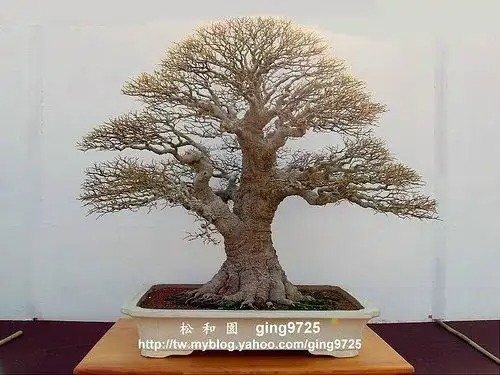 1. A miniature version of the natural botanical garden plant
1. A miniature version of the natural botanical garden plant
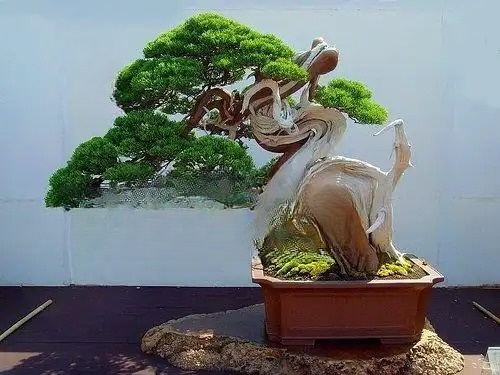 2. Shimpaku bonsai, a miniature of nature
2. Shimpaku bonsai, a miniature of nature
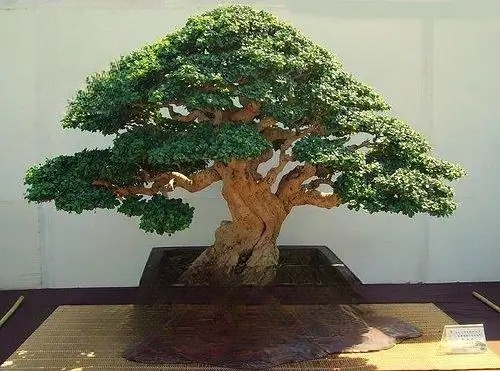 3. A miniature version of the Fujian tea plant
3. A miniature version of the Fujian tea plant
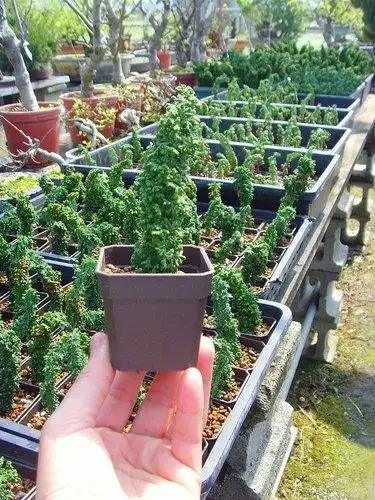 4. A petrified cypress seedling in a pot, but if you work hard to cultivate it...it will become a potted tree in the future
4. A petrified cypress seedling in a pot, but if you work hard to cultivate it...it will become a potted tree in the future
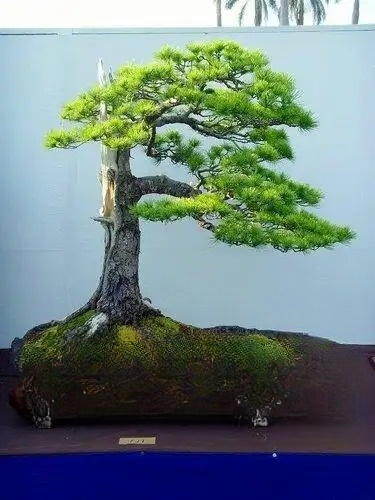 5. Pine and cypress potted plants - Pinus truncatula
5. Pine and cypress potted plants - Pinus truncatula
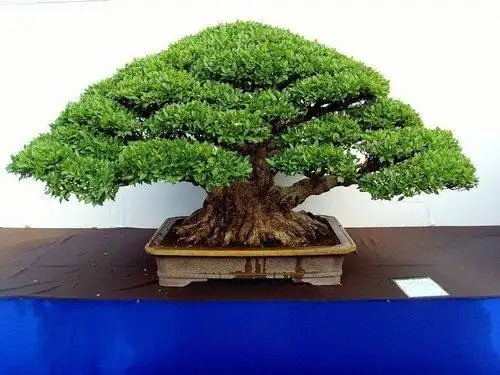 6. Evergreen miscellaneous trees in potted plants - Banyan trees
6. Evergreen miscellaneous trees in potted plants - Banyan trees
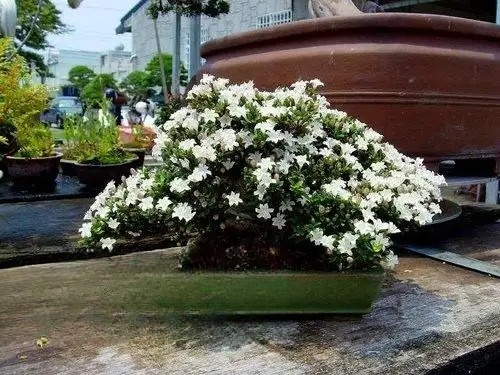 7. Flower and fruit potted plants - Clove
7. Flower and fruit potted plants - Clove
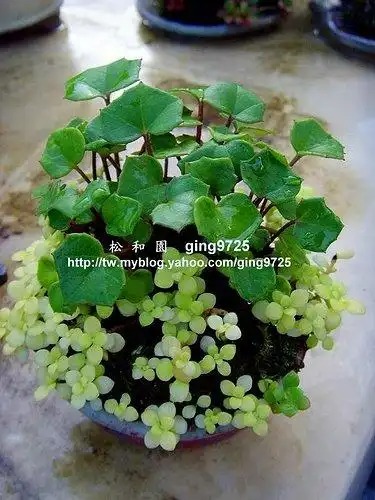 8. Wildflower Bonsai
8. Wildflower Bonsai
Bonsai Basics 2: Watering
A common saying in the bonsai community: "Watering takes three years" means that it takes three years to learn how to water. When apprentices first learn bonsai, they have to water the plants for three years. Only after they have understood the key points of watering will the master begin to teach them other techniques. Now is a civilized age. As long as you remember the following (basic principles of watering) and observe and experience carefully, I believe your potted plants will thrive.
Basic principles of watering
1. Why watering:
In simple terms, watering is to maintain the life of plants, just like people need to eat every day. Watering potted plants is not only because you water them so that their roots have water to absorb, but also because the newly poured water will expel the old air in the soil and introduce new air, which will promote the respiration of the roots in the pot.
2. When to water:
When you go to the flower market to buy potted plants, you usually ask the shopkeeper: "How often should I water them?" The answer you get is often: "Once a day" or "Once every two days" or... The plants you buy often die or develop poorly due to such misleading information, and the roots are either drowned by water or die of thirst. Since each person’s home has different environments, sunlight and ventilation conditions, how can we treat them equally? In fact, when to water - it's very simple: (water as long as the soil on the surface of the pot is dry). If you water the potting soil before it dries up, the roots of the plants will suffocate and rot over time because the soil is too wet to breathe. In addition, if the soil in the pot is too dry and has dried to the bottom of the pot but you don't water it, the roots will wither due to dehydration. When you find this, you should water it immediately. The roots will wither and lose their function, and will rot when soaked in water again... So... it's very simple: (water the plant as long as the soil on the surface of the pot is dry) Adjust the watering time and frequency according to the different environment, sunlight and ventilation conditions in your home.
3. How much water should be applied?
How much water should be used when watering? Don't just water the surface. You have to water until the water penetrates into the roots and is discharged in large quantities from the holes at the bottom of the pot. This is the only way to ventilate the soil in the pot and promote root respiration.
4. Adjust the amount of watering according to different seasons, climates, and plant conditions:
The environmental conditions in the same field will change with the changes in seasons, climate, and sunshine throughout the year. Therefore, it is recommended that you carefully observe the environmental conditions in your home, and adjust the correct time for watering as the seasons, climate, and sunshine change throughout the year, as well as the dryness of the potting soil.
In addition, the time and amount of watering must be adjusted according to the different conditions of each plant. For example, for deciduous tree species that have just been plucked or have shed their leaves in autumn and winter (maple, maple, elm, persimmon...), because the roots of the plants absorb water and the leaves evaporate water, the amount of watering during the deciduous period must be managed separately and cannot be treated the same as other evergreen tree species, so as to avoid root rot due to excessive moisture! When new buds sprouted in the spring, I discovered that they were sparse and some branches had dried up. It was too late then.
In addition, the amount of watering must be adjusted depending on the plant conditions, such as just changing the soil, flowering, fruiting, broad-leaved wood, coniferous wood, etc. However, it is still an important basic principle: (water as long as the soil on the surface of the pot is dry), but it needs to be adjusted according to the different conditions of each individual potted plant. Therefore, it is best to distinguish the plants placed at home into evergreen pine and cypress species, broad-leaved evergreen trees, and deciduous trees for zone management and easy watering.
5. Easily misled watering time:
The following two conditions often mislead our judgment, causing potted plants to lose water or become too wet:
a. Rainy days - especially during the rainy season when the rain comes and goes, it is easy for the pot soil to only get wet on the surface, but the roots at the bottom of the pot cannot absorb water. Especially if the crown is larger and looks like an umbrella, be more careful.
b. When the surface of the potting soil is completely covered with moss - When the surface of the potting soil is covered with moss due to factors such as fertilization, decoration, etc., and the potting soil is completely invisible; the moss often looks green and moist, but the soil underneath is dry, or if you water the soil without touching it with your hand to confirm the dryness first, you may run into problems. Remember, remember!
6. Other things to note when watering:
a. It is best to use a watering can or install a watering nozzle at the end of the water pipe for watering. The finer the water spray, the better.
b. When turning on the faucet under the sun, be sure to drain the "hot water" in the front section of the pipe before watering the potted plants to avoid "scalding the vegetables"!
c. When watering, let the water fall naturally like rain. Do not rush it onto the soil to "wash the roots"!
Introduction to potted plants 3: Fertilization
Potted plants are grown in pots with limited space, soil, and natural nutrients. In order for potted plants to grow normally, nutrient supplementation is absolutely necessary, so fertilization is also a very important part of daily potted plant management.
The three elements of fertilizer commonly referred to are nitrogen, phosphorus and potassium. Nitrogen can promote the growth of branches, leaves and roots. In addition to helping the growth of roots, branches and leaves, phosphoric acid is even more important for promoting the flowering and fruiting of potted flower and fruit plants. Additionally, potassium is important for the stem, roots, flowers and fruits, and overall growth of the plant.
In addition to the three main elements of nitrogen, phosphorus and potassium in fertilizers, plants actually need thirteen other important elements to grow smoothly, namely carbon, oxygen, hydrogen, calcium, iron, magnesium, calcium, manganese, boron, zinc, sulfur, copper and chlorine. Among these sixteen elements, except carbon, which is absorbed in the form of carbon dioxide Co2 from the stomata of leaves during photosynthesis. Oxygen is absorbed through respiration from the stomata of leaves or roots in the form of O2. The other fourteen elements are generally absorbed by the roots in the form of being dissolved in water. In addition to nitrogen, phosphorus, potassium, carbon, and oxygen, other elements such as hydrogen, calcium, iron, magnesium, calcium, manganese, boron, zinc, sulfur, copper, and chlorine are required in smaller quantities and plants can absorb these elements from water and soil, so they are rarely supplemented except under special circumstances. Regular soil changes for potted plants will also replenish these elements.
Commercial fertilizers are usually labeled with numbers to indicate the content of nitrogen, phosphorus, and potassium. For example:
20 – 5 – 5 means 20% nitrogen - 5% phosphorus - 5% potassium (high nitrogen content is suitable for foliage plants and conifers, which can make the leaves green and bright)
5 – 20 – 20 means 5% nitrogen - 20% phosphorus - 20% potassium (high phosphorus and potassium content is suitable for flowers and fruits, which can promote flower bud differentiation, flowering and fruiting)
20 – 20 – 20 means 20% nitrogen - 20% phosphorus - 20% potassium (average nitrogen, phosphorus, and potassium content is suitable for all plants)
So when purchasing, you should choose the appropriate fertilizer according to the tree species and needs.
Fertilizers can be roughly divided into organic fertilizers and chemical fertilizers. Generally, it is safer to use organic fertilizers for potted plants, as they are less likely to be damaged by fertilizer but more likely to breed odors and flies. Chemical fertilizers are rarely used because they are too effective and can easily damage potted plants if applied improperly. There are some synthetic fertilizers with good effects on the market now, such as "Huabao, Haokangduo, Magic Fertilizer...etc.". As long as they are used according to the instructions on the package, the effects are good, they are not prone to fertilizer damage and will not produce odors or flies.
When it comes to choosing fertilizers for potted plants, I personally recommend organic fertilizers such as triangular fertilizer and jade fertilizer imported from Japan. Triangular fertilizer is the best choice because of its long-lasting effect, and the fertilizer particles are not easy to break apart and will not produce odors or flies. However, because its raw materials contain chicken manure... plus avian influenza... it is now banned from import, so it is not easy to buy on the market. Therefore, I have now switched to using the iron barrel-packaged "Jade Fertilizer" produced by Japan's Ohta Oil & Fats Co., Ltd. The fertilizer has a long-lasting effect, the fertilizer particles are not easy to break apart, and are unlikely to produce flies and insects, but... there is an odor. In addition, for seedlings that have just been repotted or Rhododendron gaoyueensis, which are easily damaged by fertilizer and have their roots rotted, it is recommended to use slow-release synthetic fertilizers such as "Hao Kang Duo" which is safer.
Preparation and use of organic water fertilizer: Use the commonly available organic fertilizer for each granule in a ratio of 1:10 to water (volume ratio), soak it in a sealable plastic bucket, place it in a cool place and ferment it for 30 days before use. When using, use a measuring cup to measure the water fertilizer and dilute it with clean water at a ratio of 1:10, then use a commercially available fertilizer kettle (similar to a watering kettle but with a very small spout) to pour the diluted organic water fertilizer on the potting soil. The best way to use water and fertilizer is to water the potted plants once in the morning, and then use it when the soil in the potting soil is semi-dry in the afternoon. Because the potted plants are in the state of most needing water, the water and fertilizer poured into the soil will be immediately absorbed and utilized by the roots. The effect of using water and fertilizer is significant, and the fertilizer effect can be immediately reflected within 3 to 7 days. As long as the dilution ratio is correct, it is not easy to be damaged by fertilizer. It can be used once every 7 to 14 days.
When should you fertilize? Generally, plants will have a "growth cycle" throughout the year as the climate changes throughout the year, so the time and amount of fertilization must also be coordinated with the plant's "growth cycle" in order to be effectively utilized by the plants. The time and fertilizer application amount of the plant growth cycle are briefly described as follows:
1. Vegetative growth period: (April to June) is from the time when new buds bulge and sprout to the time when new buds stop and elongate, and branches and leaves grow fully. During this period, watering and fertilizing are the key points of potted plant management. However, early spring fertilization has nothing to do with the growth of spring buds, because spring fertilizer can only be used by plants after the new leaves are fully expanded. The energy required for the sprouting of spring buds depends on the nutrients accumulated when fertilizing in the autumn of the previous year. The nutrients accumulated during the autumn fertilizer must be induced and utilized by water, so watering management during this period is very important. Once the new leaves are fully expanded and the leaf area enlarges, the fertilizer requirement increases greatly and you must pay attention to fertilizer supply. Change the fertilizer on the pot surface at least once a month. The general amount of fertilizer is from April to mid-May. From mid-May to the end of June, in addition to basic fertilizer application, water and fertilizer can be supplemented once a week.
2. Reproductive growth period (July to August) Trees of a certain age will begin to differentiate flower buds in order to reproduce after the vegetative growth period, so this period is called the reproductive growth period. When the new shoots of the plant stop growing, leaf buds will differentiate again in the leaf axils and branch tops. When these leaf buds turn into flower buds, it is called flower bud differentiation. The time of flower bud differentiation will vary depending on the tree species and the climate of the location (I will not go into details here), but most tree species differentiate flower buds between July and August. During this period, it is advisable to apply flower and fruit fertilizers with low nitrogen and high phosphorus and potassium to potted flower and fruit plants to promote more complete differentiation of the plant's flower buds, so that more beautiful flowers can bloom in the spring of the following year and more and larger fruits can be produced. For other potted tree species during this period, a small amount of fertilizer can be applied and replaced once a month.
3. Nutrient accumulation period (September to mid-November) After entering September, the daytime temperature is still high, but the temperature drops rapidly after nightfall, forming a large and obvious temperature difference between day and night. This is the most suitable period for plants to synthesize and accumulate carbohydrates produced by photosynthesis. The plant root system is also the most active, and it is also the most important period for potted plant fertilization management. If the carbohydrates accumulated by the plants during this period are insufficient, it will be clearly reflected in the weak and uneven sprouting of buds in the spring of the next year, and the easy loss of twigs in miscellaneous woods and deciduous trees. Therefore, during this period, the plants must be given sufficient fertilizer, sufficient sunlight, and a healthy leaf area for photosynthesis in order to accumulate sufficient carbohydrates to survive the winter. Therefore, from September to the end of October, in addition to placing a large amount of fertilizer on the pot surface, you can also supplement water and fertilizer once a week. From early November to mid-November, start to reduce the amount of fertilizer placed on the pot surface and stop applying water and fertilizer.
4. Dormant period (mid-November to March) Because Taiwan is located in the subtropics, some evergreen pine and cypress species do not have a very obvious dormant period after entering the dormant period. A small amount of fertilizer will not cause any harm, but deciduous trees need to stop fertilizing and focus on water management. Deciduous trees often die of water loss or excessive moisture in winter, and lose branches...
Notes on fertilization:
1. Use according to the instructions on the fertilizer package, and adjust the dosage and frequency according to the size of the pot, the type of tree, and the amount of fertilizer required.
2. Potted plants may not die if they are not fertilized. At most, they will be stunted. However, if you fertilize too much... they will wither and die.
3. Do not fertilize the potted plants within one month after the soil has just been changed. Fertilizer should be applied only after the roots and leaves can metabolize normally.
4. Apply fertilizer two weeks before removing the leaves of miscellaneous wood potted plants to ensure that they have enough energy to grow new buds. However, do not apply fertilizer after removing the leaves and before new buds open.
5. Do not apply fertilizer when the plant is sick or weak.
Note: This discussion of fertilization focuses on the basic application of plant physiology, but the amount of fertilizer must be adjusted due to different potted tree species, different local climates, and different degrees of finished potted plants.
Introduction to potted plants 4: Disease and pest control
When we grow potted plants, we will encounter diseases and pests. Therefore, we must carefully observe the health of each plant when watering it every day. Once a disease or pest is found, it must be dealt with immediately. Otherwise, the consequences will be disastrous. At the very least, the plant will become weak and lose branches, and at the worst, it will lead to the death of the plant.
This article "Disease and Pest Control" mainly provides a brief introduction to the diseases and pests that we often encounter in the daily management of potted plants, as well as the correct and effective prevention and control drugs. If you encounter special diseases or pests and don’t know how to deal with them, I suggest you consult a pesticide store near you. I think the problems of diseases, pests and medication should be easily solved.
1. Diseases:
Diseases can be divided into three categories: fungal, bacterial, and viral. Common disease names, symptoms, and suitable fungicides are described below.
Powdery mildew : It often occurs during the high temperature and high humidity period from April to October. Many powdery white spots appear on the leaves, leaf stalks, and pedicels, causing the leaves of the infected plants to become distorted and smaller. In severe cases, the growth of the plants stagnates.
Anthracnose: often occurs during the rainy season and autumn. Concave curved rings appear on the leaf surface, and small black spots appear on the affected areas. The spores on the lesions will be blown away by the wind...and invade the plants through water and moisture.
Black mold: occurs throughout the year (this disease will not occur if scale insects and aphids are not present). When black mildew occurs on leaves in severe cases, it may also occur on branches and trunks, weakening the plant.
Red blight: Occurs throughout the year, especially in summer and autumn. The new shoots of infected plants will turn red and dry up, and in severe cases the plants will wither and die. (When the juniper is infected with this disease, irregular reddish-brown dry spots will appear on the leaf scales)
Branch blight: occurs throughout the year, especially in summer. The pathogen invades the plant through branch cuts, insect wounds, sunburns and damaged bark... After penetrating into the wood, it causes the infected area to die.
Suitable fungicide: The fungicides often mentioned in the bonsai books on the market are: "Spray lime-sulfur mixture in winter, spray Dasheng and Yili powder water mixture in spring..." I wonder if you readers think the effect is not good? Especially Dasheng and Yili... This may be related to the evolution and drug resistance of pathogens. Based on my personal experience, I have only used two kinds of medicines in the prevention and treatment of diseases in the past two years, and I have emphasized "prevention is better than cure"! The effect is good and I recommend it to everyone.
1. Copper water preparation - available in powder form and emulsion form. Dilute according to the instructions on the package, usually 800 times.
2. Uranus (Circumplex) – This is a high-concentration liquid imported from Germany, diluted 3000 to 4000 times before use. This agent is difficult to purchase and needs to be inquired from large pesticide stores. It is also more expensive. However, after I started using this medicine regularly two years ago, maple, maple and amaranth, which are most susceptible to powdery mildew during the rainy season, have never been sick again, and it is also effective against red blight and anthracnose.
Individuals should use the two fungicides alternately, spraying at least once a month, and re-spray as soon as the sky clears during the rainy season or after continuous rainy days.
2. Pests:
Pests can be divided into four categories: scale insects, mites, small insects, and caterpillars. Common pests and suitable insecticides are described below.
Scale insects: Occur throughout the year, with larvae hatching from May to August. There are many species of scale insects... There are species without scales and species with powdery scales. Most of them are fixed on branches, while some can move freely. Scale insects suck the sap of the plant, causing the branches to wilt, and are prone to complications such as serious "black mold disease". It is not easy to kill the insects by spraying because of the protection of the scales. When the pest is serious, it is best to brush the branches and trunks with a dry toothbrush to break the scales and then spray the pesticide for the best effect!
Mites: Often occur during the high temperature period from April to October. Spider mites are herbivorous pests belonging to the class Arachnid, not insects belonging to the class Insecta. Commonly known as "red spider", it is extremely small (0.2mm~0.3mm), featherless, lives in groups, has a very short generation period, and continuously reproduces by parasitizing and sucking sap from trees, causing serious damage. Because of their small size, they are not easy to detect. By the time you find them, the branches and leaves have already changed color and withered. You can put a piece of white paper under the branches and leaves, and then knock on the branches. Observe whether there are fallen spider mites moving on the white paper. That’s it.
Small insects: Most in spring, less in summer, and more in autumn. Small insects include aphids, thrips, whiteflies, psyllids, army fan insects...I will not introduce them in detail here. We will only introduce the more common aphids. Aphids suck the sap from new buds, leaves, branches, stems, and petals, which deteriorates plant growth, causes leaf shrinkage and deformation, and can easily lead to serious "black mold disease." It lives in groups and coexists with ants. It is common to see ants running up and down the plants infested with this pest.
Green worms: They usually occur from April to October. Caterpillars are the larvae of moths and butterflies. They mainly feed on branches and leaves, destroying the beauty of plants... But if the situation is serious... it can be very scary... with thousands of insects crawling around...
Suitable insecticides:
Scale insects – Use "Dameisong" or "Taosong" diluted 1000 times and spray.
Mites - dilute "Fenpronin" or "Abatin" 1000 times and spray it.
Small insects: Use 1000 times diluted Wanling to spray.
Caterpillars - dilute "Wanling" 1000 times and spray it.
The above-mentioned insecticides "Dameisong" and "Taosong" are more likely to cause phytotoxicity. Please pay attention to the correct dilution multiple when using them (cherry, plum, elm, elm, and oak...are prone to scorching leaves and falling leaves).
Individuals can use the following insecticide and fungicide combination to spray at least once a month to prevent insect pests:
Combination A: "Abatin" 1cc + "Wanling" 1cc + "Uranus (Huankezuo)" 0.25cc + water 1000cc.
Combination B: 1cc of "Da Miesong" + 1cc of "Wanling" + 0.25cc of "Tianwang (Huankezuo)" + 1000cc of water.
If it is determined that the plant has disease or pest, I will "prescribe the right medicine" and spray it at least three times every three days!
When spraying pesticides, please pay attention to personal protective equipment: wear long-sleeved clothes, masks, hats, rubber gloves, shoes
Reasons for uneven germination of potted dead branches or shoots
If your previous hand before purchasing is heavy fertilizer management, and you apply after the amount of fertilizer and the previous hand too little too much when you will also easily lose branches!
Is your usual fertilization and especially autumn fertilizer enough? Insufficient autumn fertilizer over the winter easy to wither branches or spring buds do not germinate!
It is the finished tree branch when the amount of must have more fertilizer to supply it, if the fertilizer is insufficient when the physiology of the tree will be in the way of losing branches to find its own physiological average.
When the potted plant creation shaping process "spread branch shed", no consideration of lighting, sunlight, overlapping branch shed space is insufficient, due to the internal branches long-term insufficient sunlight, overwinter easy to wither branches or spring buds germinate incomplete!
Deciduous tree species lush branches and leaves, long-term not picked leaves, because the internal branchlets long-term lack of sunlight easy to wither!
Pot full of roots in winter dormant watering control is not good when too wet rotten roots, in spring will also appear lost branches!
In winter, the fallen leaves lose water and roots during the dormant period, and in spring there will also be lost branches!
Fat damage defeated roots will also appear lost branches!
When replanting and changing the soil did not consider the "balance of root amount, branch amount" for excessive pruning of roots when deep cut; small root amount is insufficient, easy to wither branches or new shoots germinate not uniform!
Insect pests such as scale insects and red spiders can also cause potted withered branches or new shoots to germinate incompletely!
Insect pests such as aphids during the spring budding period can also cause potted spring buds to germinate incompletely!
Loss of water during the spring germination period can also cause potted spring buds to germinate incompletely!
Spraying the agent is not proportionally formulated. The concentration is too high resulting in phytotoxicity, which can also cause potted plants to wither or die!
Conclusion: The more carefully you observe and care for your beloved potted plants, the more it will reward you with its most beautiful appearance!
Plant propagation [Pot plant beginners]
Plant reproduction methods are divided into sexual reproduction and asexual reproduction. Sexual reproduction refers to the sowing method of seed reproduction, while asexual reproduction can be divided into cutting, layering, division, grafting, spore reproduction, tissue culture, etc. The advantages of sexual reproduction are that it can reproduce in large quantities, has stronger resistance, and produces healthier plants, but the seedlings take a long time to grow and sometimes mutate due to external environmental factors; asexual reproduction takes a short time to cultivate seedlings, has a high success rate, and the characteristics of the variety are easy to preserve.
|
When you first start buying potted plants, you should first consider the planting environment and then decide on the appropriate tree species to plant. If you can't decide, you can go to a professional bonsai garden to buy it. How to choose your first potted plant: The price of potted plants varies depending on the tree species, technique, year, etc. It is recommended that beginners find a reputable potted plant garden and start with seedlings or cheap potted materials. Don’t buy rashly on impulse. Once you get home you will only end up watching the potted plants wither away, and your love for potted plants will gradually fade away, and you may never want to touch them again. When purchasing, please note: 1. Choose healthy plants: (1) Check the leaves. If there are abnormal phenomena such as yellowing, spots, curling, etc., they may be infected with diseases or pests. The back of the leaves also needs to be checked, as some small insects will hide on the back of the leaves, so be careful when purchasing. (2) The trunk should be thick, with many branches and dense leaves, and the tree should be strong and healthy. (3) The root plate should be slightly exposed above the pot surface, which means that the tree has been planted for some time and is in good health. If the tree has just been repotted or grafted and has not yet taken root, it may have problems such as poor adaptation or inability to take root, which is a high risk. You can wait for a while to see the condition of the tree before deciding whether to purchase it.
The root plate is evenly distributed, the tree is strong, and the branches and leaves are dense (Figure: Podocarpus) 2. Environmental requirements: (1) Sunlight and location: full sun, half sun. If the indoor potted plants are accustomed to the indoor environment, if they are moved outdoors rashly, they cannot adapt to the changes in the environment and are easily damaged. (2) Climate and temperature: Spring, summer, autumn, winter, rainy season, etc. Different tree species have different environmental requirements. Before domestication, they need to be given the same growth environment as their place of origin and then slowly domesticated. It is recommended that novices purchase tree species that have adapted to the local environment.
Seed pots suitable for indoor placement (Photo: Guava seed pots) (3) Soil: Potted plants need to absorb nutrients from the soil through their roots, so soil is very important for plant growth. Potted soil must be breathable and well-drained. If the soil becomes sticky after watering and has poor drainage, oxygen cannot enter the soil, and the plant roots will be trapped inside and cause corruption.
Granular soil is classified by particle size (Figure: Japanese imported Akadama soil from the Sanben Line) (4) Fertilizer: There are more than 16 elements that plants absorb from the soil. Generally, the soil in the mountains is natural soil, which contains nutrients required for plant growth. The nutrients in potting soil itself are limited, so additional fertilizers need to be added to supplement the insufficient nutrients.
Commercially available fertilizers (Figure: Fertilizers imported from Japan) (5) Watering: A common saying in the bonsai community is "watering takes three years", meaning that it takes three years to learn how to water. Watering potted plants is not only because you water them so that their roots have water to absorb, but also because the newly poured water will expel the old air in the soil and introduce new air, which will promote the respiration of the roots in the pot. Wait until the soil surface is dry before watering. If you water too often without paying too much attention to the plant, water will accumulate in the soil and it will not be able to breathe, which can easily lead to root rot. 3. Pests and diseases: If unresolvable problems occur during the planting process, such as infection, pests, or causes that cannot be determined, please contact the original purchaser or consult an experienced expert. Do not use random drugs to avoid irreversible consequences. The above is a brief discussion of the things you need to pay attention to when purchasing potted plants. I wish you a good start when planting potted plants. Watching your favorite potted plants grow stronger day by day will naturally give you an indescribable sense of satisfaction and accomplishment.
|
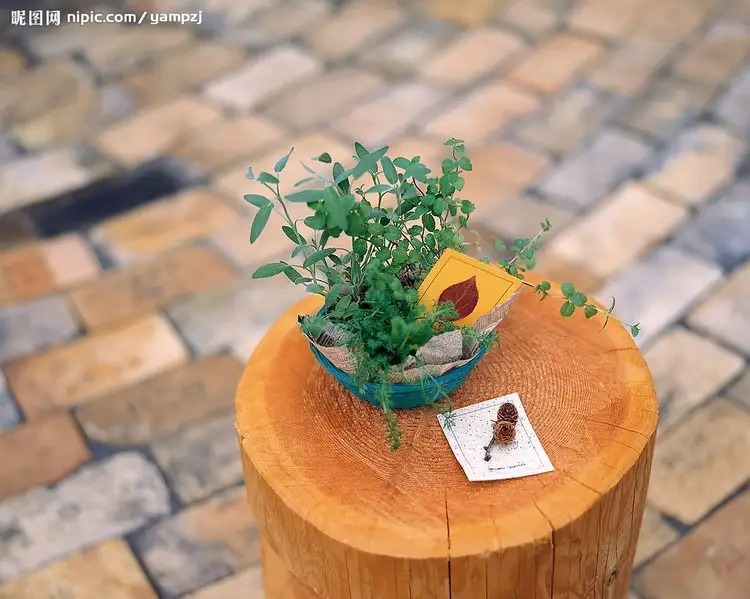
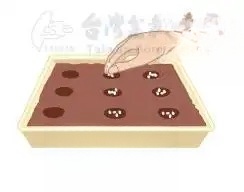
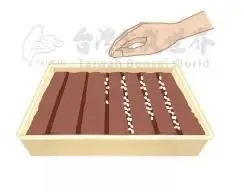
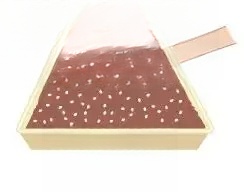
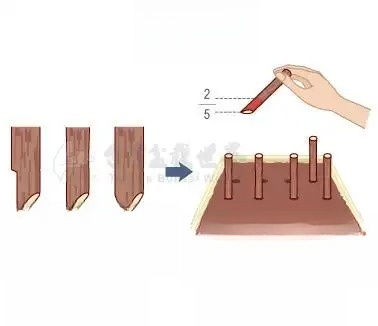 1. Hardwood cutting method: The most commonly used method for woody plants, using 1-year-old semi-lignified healthy branches.
1. Hardwood cutting method: The most commonly used method for woody plants, using 1-year-old semi-lignified healthy branches.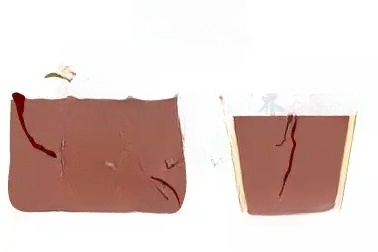 2. Root grafting method: Take the roots before new shoots grow in early spring.
2. Root grafting method: Take the roots before new shoots grow in early spring.